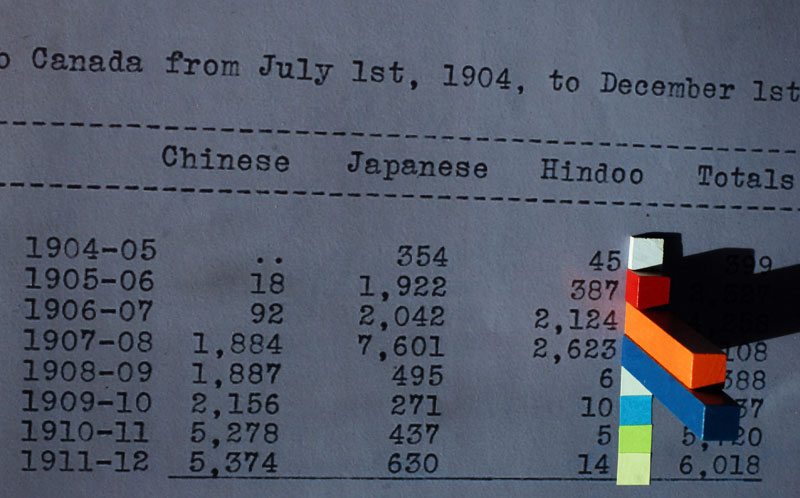School and University Curriculum
Dis-Immgriation puts real people in a real story into the many high school courses that address the following related topics: history of Canada’s development, cultural communities, ethics, the pluralistic society, religious culture, history of citizenship, ethnic and religious groups, impact of political and legislative processes in Canada, immigration, and discrimination.
British Columbia
Dis-Immigration best meets the objectives of the B.C. Grade 11 curriculum. It fits well with the Civics Studies 11 course, Unit 4: Culture, Language, Heritage and Community. This course focuses on many of the very issues that are part of the Dis-Immigration story. The film will be an effective stimulant to discussion of citizenship in relation to immigration, racism, and ethnic communities.
The B.C. Grade 12 History curriculum, with its starting point in 1919, covers the critical time for the Asian immigrant community. Student understanding of how history unfolded to that point through political and cultural pressures and decisions, can be gleaned through watching and discussing Dis-Immigration.
Alberta
Alberta offers two Grade 12 Ideology courses that develop responses to local, national and global issues. Many of the issues (multiculturalism, religious community tensions, pressure in politics, rights and citizenship and more) are addressed and personalized in Dis-Immigration.
The Grade 9 Social Studies course, Canada: Opportunities and Challenges, is about citizenship, identity and quality of life impacted by political and legislative processes in Canada. Dis-Immigration offers facinating historical examples of these processes.
The Grade 9 Social Studies course, Issues for Canadians: Governance and Rights, has a case-study in Dis-Immigration where the early immigrant Sikhs did not enjoy the rights of family, equal pay, citizenship or voting, and how this changed.
The Grade 9 Social Sciences 20-30 program’s course, Western Canadian History 20, would gain “an appreciation of the contributions made by diverse ethnic and religious groups” through viewing Dis-Immigration. In this way students will meet members of one ethnic and religious group who eventually become Canadian citizens.
Saskatchewan
Saskatchewan’s Grade 8 unit: Canada – A Nation of Immigrants, teaches specifically about the immigration of Sikhs and Chinese into Canada. Dis-Immigration, about this exact topic, would clearly serve as a valuable tool to support the teaching of this unit.
Ontario
The Ontario curriculum covers the issues treated in the film in Grade 12, in both Geography and History programs. The Grade 12 University Preparation course, "Canada: History, Identity, and Culture," could use the film Dis-Immigration as a starting point for classroom work and discussion on successive waves of immigration, cultural and national identity, citizenship, multiculturalism, and discrimination.
University/College
At the university and college level, courses on ethics, multiculturalism, impact of political legislation, ideology, history, and cultural development would all relate well to the stories told in Dis-Immigration and will clearly benefit from a viewing of this film to stimulate thought and discussion.

The numbers of Chinese, Japanese, and Indian (mostly Sikh) immigrants who entered Canada between 1904 and 1912

Clipping from the Ottawa Free Press, October 1907 (Library and Archives Canada)

Telegram to the Minister of the Interior, January 1912, appealing for the admission of wives and children into Canada (LAC)